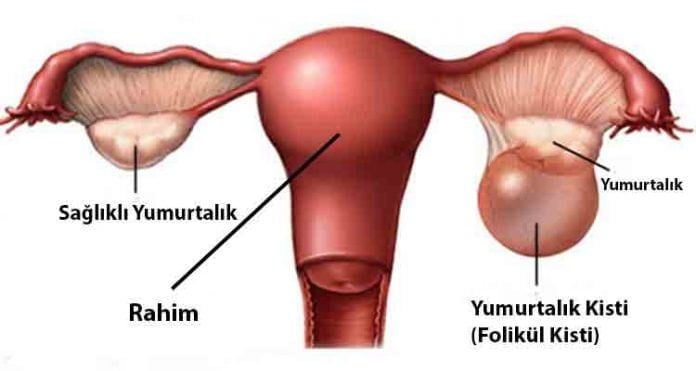Problems with the ovary can cause infertility or they can disappear spontaneously without requiring treatment in various cases. However, in some cases, ovarian cancers that can be life-threatening may also occur. The ovarian cyst usually does not give symptoms when it settles in the abdominal cavity. For this reason, it is necessary to examine the ovaries regularly with ultrasonography. Problems such as abdominal pain, pain during sexual intercourse, frequent need to urinate, pressure on the breech and bladder may indicate ovarian cysts.
Even if the woman has no problem, gynecological examination should be performed every six months. It is also very difficult to achieve pregnancy in patients with cyst problems in the ovaries. Therefore, infertility treatments are used.
Does ovarian cyst lead to cancer?
For every woman, a cyst covering the egg regularly occurs in the ovaries every month. These cysts are named as follicles. The egg formed in the follicle is expelled with the growth of the follicle. If this discarded egg meets the sperm cell, the embryo that will form the pregnancy is formed. The embryo, which is formed by the hormones secreted in the area, attaches to the uterus and pregnancy occurs. If pregnancy has not occurred, the menstrual period begins. Women may encounter ovarian cysts throughout their lives. In such cysts, there may be a rupture or the cysts may turn around and bleeding may occur. In such cases, the ovarian cyst begins to give symptoms.
What are functional cysts?
Functional cysts are usually asymptomatic cysts. It is more common in women who are in the reproductive period. Functional cysts are usually detected during routine gynecological examinations. These cysts, which are taken under follow-up, usually disappear spontaneously. For their treatment, medical methods are used to suppress the ovaries. If the cysts cause bleeding, the patient may feel severe pain. For this reason, painkillers can be used. Rarely, cysts may coincide with the vein at the cracking stage and surgical interventions may be needed in such cases. If the cysts are in the form of rupture, emergency intervention may be required with sudden and severe pain.
What is a polycystic ovarian cyst?
Polycytic ovarian cysts are small ovarian cysts located around the eggs. The factor that leads to the formation of these cysts is usually the impaired balance of hormones. Due to this problem, menstruation becomes irregular and it may be difficult to conceive. Polycystic ovary syndrome can lead to metabolic problems. In polycystic ovary syndrome, where infertility can also be seen, there is a risk of miscarriage even if pregnancy occurs. If the woman with polycystic ovary syndrome has performed for treatment to have a child, treatment methods are planned accordingly.
What is a chocolate cyst?
The problem of chocolate cyst arises when the wall covering the uterus is located in a different place outside the uterus and continues its behavior during menstruation in this area. Chocolate cysts usually give symptoms. It is symptomatic with pain in sexual intercourse, groin pain and severe pain during menstruation. Chocolate cyst is a problem that often leads to infertility. It is possible to achieve successful results with IVF treatment. With the treatment of chocolate cyst, IVF treatment may not even be needed. However, the chocolate cyst can reappear because it is a disease with a high risk of recurrence.

